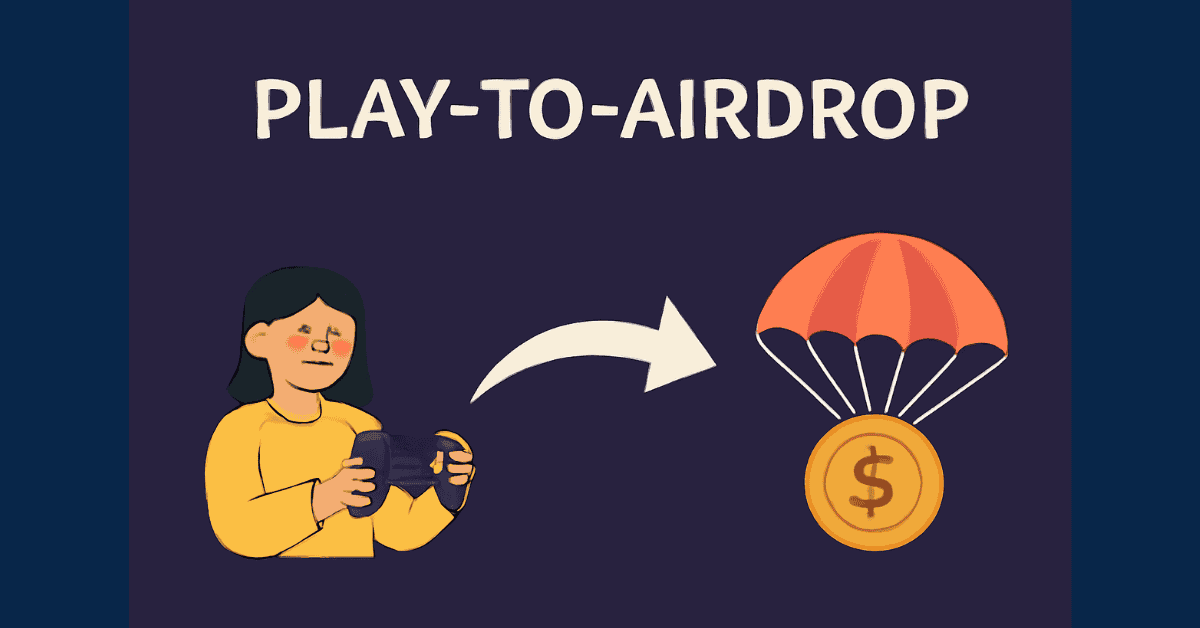
Play-to-Airdrop: A New Model in Gaming
1. What is Play-to-Airdrop?
Play-to-Airdrop (P2A) is a model where tokens or NFTs are rewarded via airdrop when players engage in special activities within the game. The key feature of this model is that rewards are not granted immediately; instead, they depend on the player's long-term and active participation.
While the Play-to-Earn (P2E) model focuses on allowing players to earn money right from the start, P2A requires players to complete tasks, participate in community events, or promote the game on social media platforms. P2A encourages players to stay engaged for the long term, fostering community development and reducing marketing costs.
2. Reasons Behind the Rise of Play-to-Airdrop
Play-to-Airdrop has grown significantly in 2024 as an alternative to the P2E model. When P2E games faced challenges in maintaining token value stability and retaining players, P2A emerged as a tool to enhance player engagement and improve the in-game economy.
P2A not only helps mitigate token inflation but also promotes active player participation through airdrop events. This allows game projects to save on marketing costs and build a loyal player community.
3. Differences Between Play-to-Airdrop and Play-to-Earn
Nature of Rewards
P2E: Rewards are tokens or in-game assets that can be traded immediately.
P2A: Rewards are tokens or NFTs distributed via airdrop, with potential value depending on the game's development.
Frequency of Rewards
P2E: Players receive rewards regularly based on their performance in the game.
P2A: Rewards are given when specific milestones are reached or during events organized by the developers.
Community Interaction and Engagement
P2A: Creates a more engaged community, encouraging players to maintain interaction.
P2E: Focuses on the in-game economy, with less emphasis on community interaction.
Value of Rewards
P2E: The value of rewards is stable and less influenced by external factors.
P2A: The value of rewards is more speculative and may increase significantly depending on market demand.
4. Games That Have Adopted Play-to-Airdrop
Many Web3 games in 2024 have adopted the Play-to-Airdrop model, enhancing player participation and building a sustainable in-game economy. Some notable examples include:
Pixels: The game attracted over 1 million players through its PIXEL token airdrop.
Spellborne: This game uses P2A to retain players and grow its community.
Nifty Island: Players participate in events and earn ISLAND tokens.
Kuroro Beasts: Rewards players with KURO tokens through in-game events.
5. Case Study: Success of Spellborne
Spellborne is a prime example of implementing Play-to-Airdrop (P2A). The game achieved remarkable success in attracting and retaining players through its P2A strategy:
Implementation Strategy
Varied Missions and Rewards: Players engage in activities like monster hunting and PvP battles to earn points that can be exchanged for airdrop tokens and NFTs.
Community Engagement: Social events, tournaments, and large PvP matches create opportunities for player interaction and competition.
Controlling Token Inflation: Approximately 50% of the KURO tokens are distributed through airdrops, helping maintain token value and creating scarcity.
Spellborne has attracted over 100,000 sign-ups and more than 12,000 daily active users. This success demonstrates how the Play-to-Airdrop model can create a sustainable player community and keep players engaged long-term.
6. Current Market and the Growth of Play-to-Airdrop
The Play-to-Airdrop model is becoming a popular trend in 2024 due to its ability to attract players without requiring initial investment. Games like Pixels, Nyan Heroes, and Nifty Island have successfully used P2A to build engaged communities and increase player numbers. However, as more games adopt this model, the question arises whether P2A can continue to maintain its competitive edge as the market becomes more crowded.